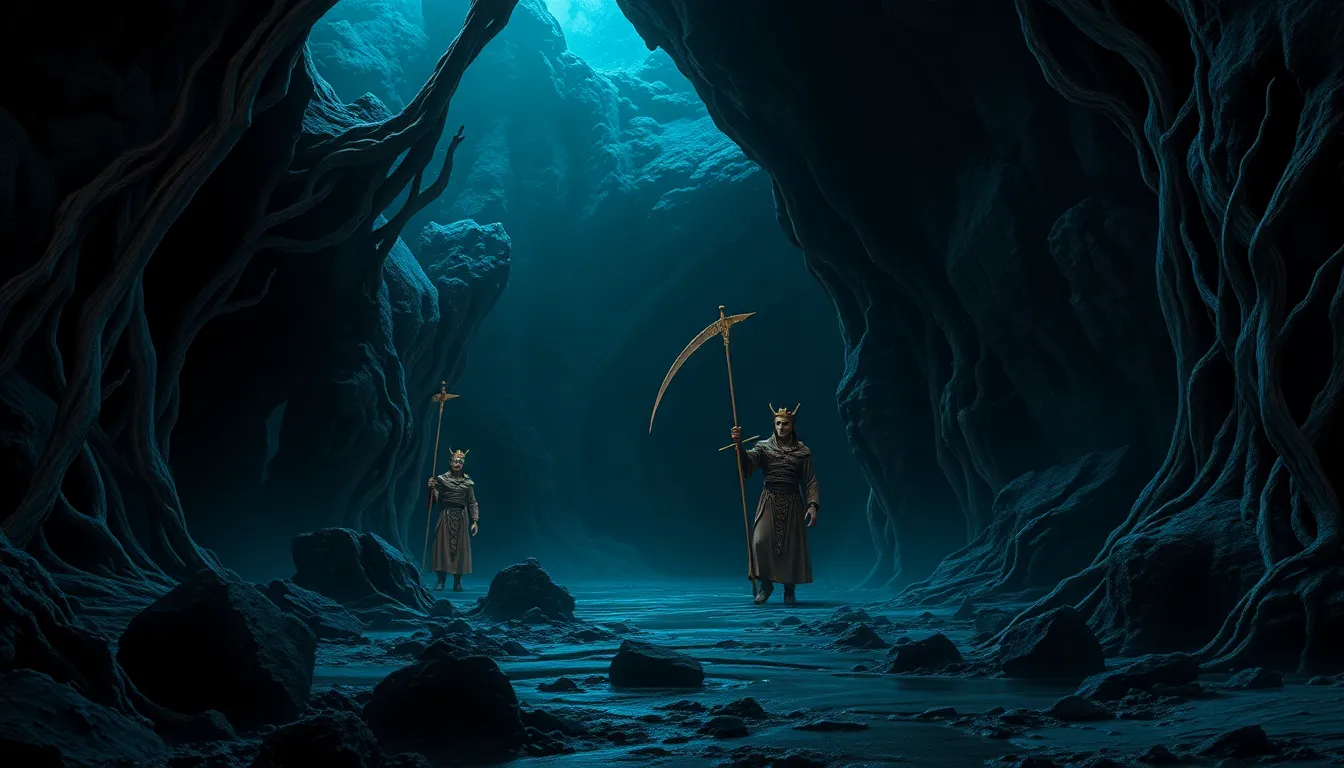Underworld Myths: The Stories That Haunt Our Dreams
Introduction to Underworld Myths
Underworld myths are stories that explore the realms associated with death, the afterlife, and the souls of the deceased. These narratives have been a significant part of human culture, reflecting our deepest fears and curiosities about what lies beyond life. Across various civilizations, these myths serve not only as explanations for the mysteries of death but also as moral guides and cultural touchstones. This article aims to delve into the rich tapestry of underworld myths, exploring their historical significance, common themes, and their lingering impact on modern society.
Historical Context of Underworld Myths
From the ancient Egyptians who built grand tombs for their pharaohs to the Greeks who spoke of the Elysian Fields, underworld myths have evolved significantly over time. Many ancient civilizations believed in an afterlife where souls would be judged and sent to a realm of eternal rest or punishment. The beliefs surrounding the afterlife have changed from one era to another, influenced by philosophical, religious, and cultural shifts.
- In ancient Mesopotamia, the afterlife was viewed as a dreary existence in the “House of Dust.”
- In contrast, the Egyptians believed in a complex system of judgment overseen by Osiris, where the heart of the deceased was weighed against the feather of Ma’at.
- Greek mythology introduced the concept of Hades, where souls would reside based on their earthly deeds.
This historical evolution reflects humanity’s ongoing quest to understand mortality and the fate that awaits us after death.
Common Themes in Underworld Myths
Across cultures, underworld myths often share common themes that resonate with the human experience. Notable motifs include:
- Death: The transition from life to death is a central theme, often depicted through various narratives of dying and what follows.
- Judgment: Many myths feature a judgment phase where souls are evaluated based on their actions during life.
- Rebirth: Some traditions incorporate the idea of rebirth or reincarnation, suggesting that death is not an end but a transformation.
Furthermore, the symbolism surrounding underworld figures—such as deities and spirits—often embodies the duality of life and death, revealing the complexities of human emotions regarding mortality.
Prominent Underworld Myths Across Cultures
Different cultures have developed their own unique narratives about the underworld, each reflecting their values and beliefs:
Greek Mythology: Hades and the Concept of the Afterlife
In Greek mythology, Hades is the god of the underworld, ruling over the realm where the souls of the dead reside. The journey to Hades involves crossing the River Styx, often facilitated by the ferryman Charon. Upon arrival, souls are judged by three judges: Minos, Rhadamanthus, and Aeacus.
Egyptian Mythology: Osiris and the Journey Through the Duat
Egyptian beliefs center around Osiris, the god of the afterlife. The journey through the Duat, or underworld, is filled with trials and tribulations, culminating in the weighing of the heart ceremony against the feather of Ma’at. This judgment determines whether the soul will enjoy eternal life or face annihilation.
Norse Mythology: Hel and the Fate of Souls in the Afterlife
Norse mythology presents a different vision where the underworld is ruled by Hel, the goddess of death. Souls that do not die gloriously in battle are said to reside in Hel’s realm, which is depicted as a cold and dreary place. The concept of Valhalla exists for warriors who die bravely, highlighting the cultural values surrounding heroism.
The Role of Underworld Myths in Religion and Spirituality
Underworld myths play a crucial role in shaping the spiritual beliefs of various religions. They often provide frameworks for understanding morality, justice, and the afterlife. Many religious teachings incorporate elements of underworld myths:
- In Christianity, concepts of heaven and hell echo ancient underworld narratives, providing a moral compass for followers.
- Buddhism introduces ideas of samsara and karma, where actions in life influence the soul’s journey through cycles of rebirth.
- Indigenous spiritualities often feature unique underworld beliefs that emphasize harmony with nature and ancestral spirits.
The impact of these myths is profound, influencing rituals, moral values, and the way communities understand life and death.
The Psychological Perspective: Why We Dream of the Underworld
Dreams about the underworld often reflect our subconscious fears and desires. Psychologically, these dreams can be interpreted in several ways:
- Fear of Death: Many people experience anxiety surrounding mortality, leading to dreams that confront this fear.
- Exploration of the Unconscious: The underworld symbolizes the unknown aspects of the self, inviting exploration of hidden emotions and thoughts.
- Catharsis: Dreaming of the underworld may provide a sense of release, allowing individuals to confront their fears in a safe space.
Through these dreams, individuals engage in a personal dialogue with their fears, revealing deeper truths about their psyche.
Underworld Myths in Literature and Art
Throughout history, underworld myths have inspired countless works of literature and art. Notable examples include:
- Dante’s “Inferno”: This epic poem provides a vivid depiction of the Christian underworld, illustrating the consequences of sin.
- Virgil’s “Aeneid”: The journey to the underworld in this text highlights themes of fate and the heroic journey.
- Visual Arts: Artists like Hieronymus Bosch and Gustave Doré have depicted hellish landscapes and the afterlife in their works, reflecting cultural anxieties about death.
The portrayal of underworld myths in art serves to engage viewers with the complexities of life and death, offering a lens through which to examine human existence.
Modern Interpretations of Underworld Myths
In contemporary media, underworld myths are reimagined in various forms, including films, books, and video games. Notable examples include:
- Films: Movies like “The Matrix” and “What Dreams May Come” explore themes of the afterlife and consciousness.
- Literature: Authors such as Neil Gaiman and Philip Pullman incorporate underworld elements into their narratives, blending myth with modern storytelling.
- Video Games: Games like “Hades” and “God of War” engage players with interactive experiences of underworld journeys.
These modern interpretations keep the essence of ancient myths alive while making them relevant to today’s audiences, reflecting contemporary fears and aspirations.
Personal Reflections: Encountering Underworld Myths in Dreams
Many individuals have anecdotal experiences relating to dreams of the underworld. These experiences often reveal personal fears and cultural narratives:
- Some report vivid dreams of navigating dark tunnels or labyrinths, symbolizing their struggles with anxiety and uncertainty.
- Others describe encounters with deceased loved ones, providing comfort and closure.
- Many find that their dreams resonate with mythological themes, echoing the collective unconscious that Carl Jung described.
These personal reflections highlight the ways in which underworld myths permeate our subconscious, shaping our understanding of death and existence.
Conclusion: The Enduring Legacy of Underworld Myths
Underworld myths continue to resonate through time, offering profound insights into the human experience. From ancient civilizations to modern interpretations, these stories reflect our fears, beliefs, and hopes regarding mortality. They serve as a cultural lens through which we can explore our understanding of existence, morality, and the afterlife. As we navigate our own journeys through life and death, the legacy of underworld myths remains a haunting yet essential aspect of our shared human narrative.




